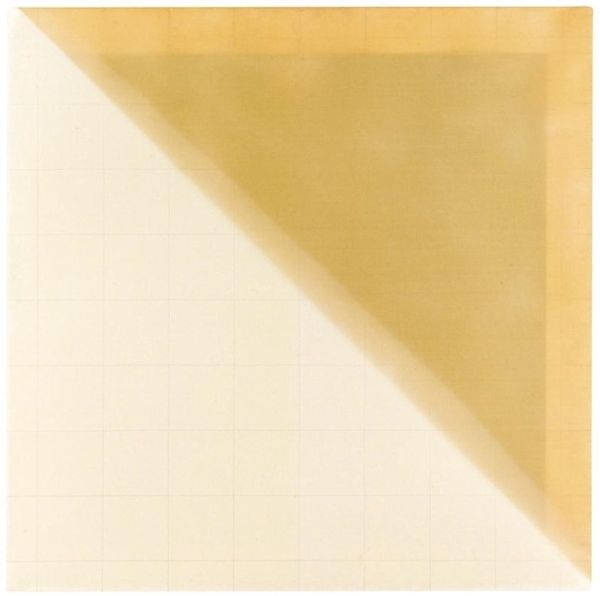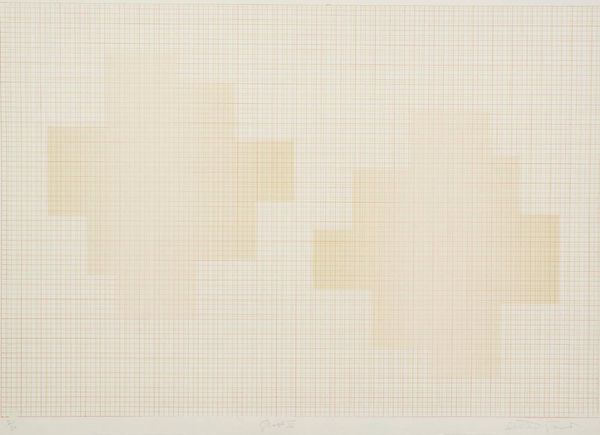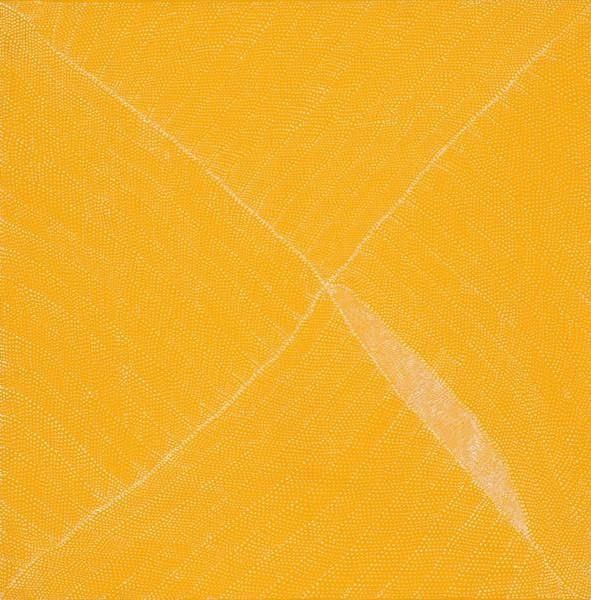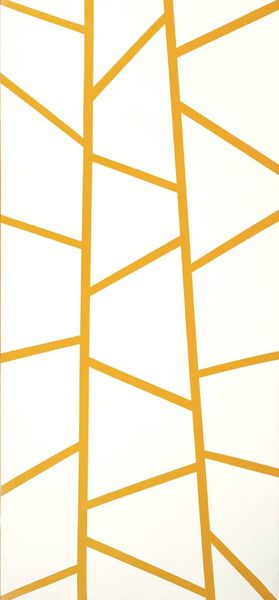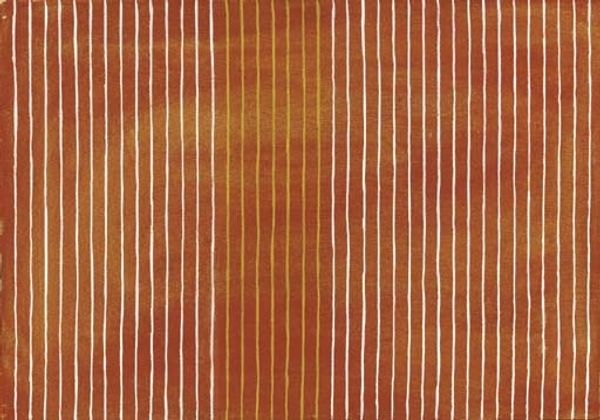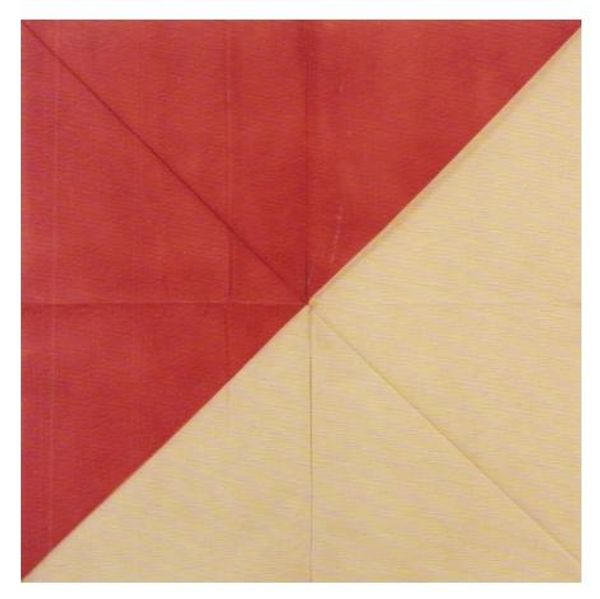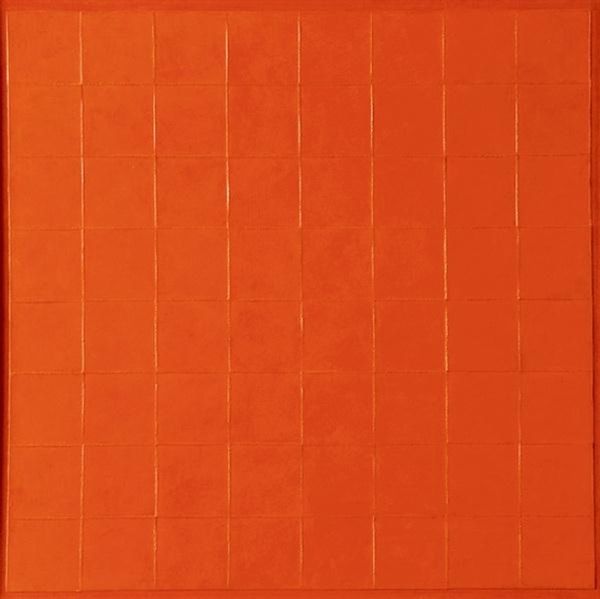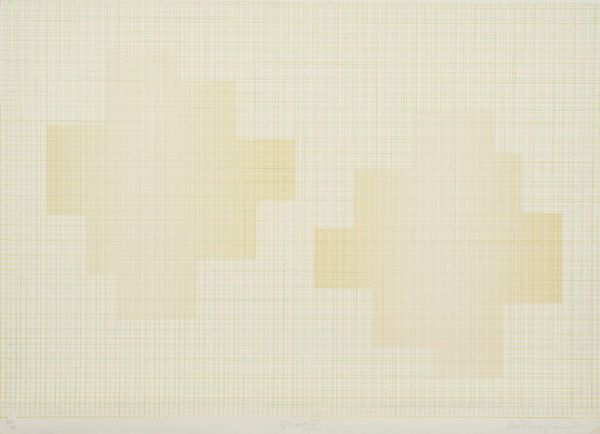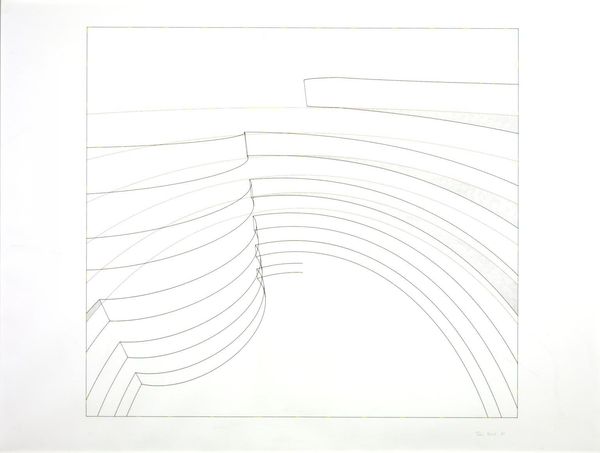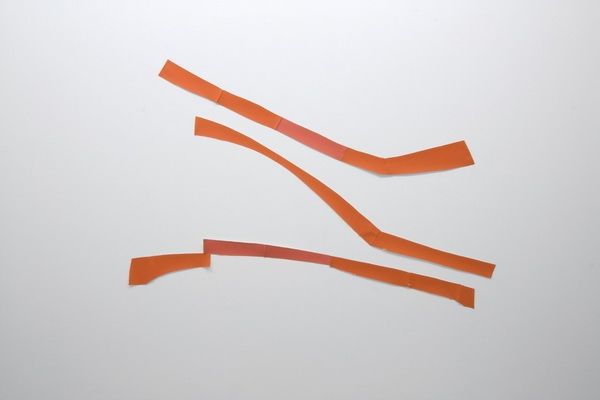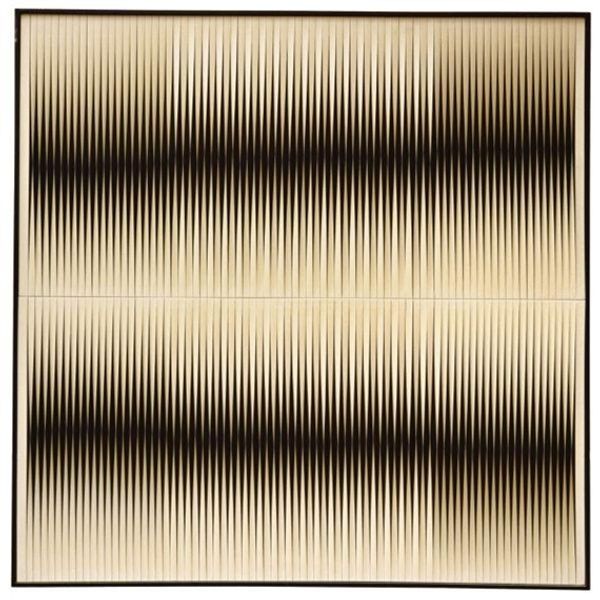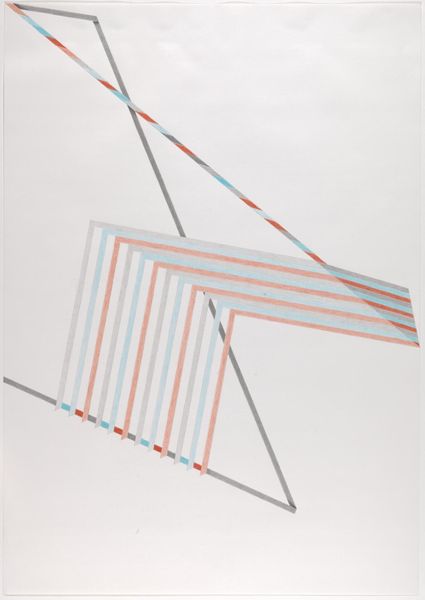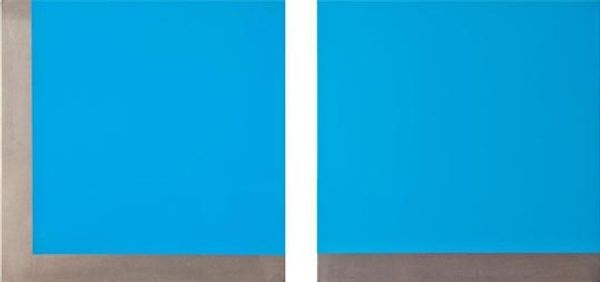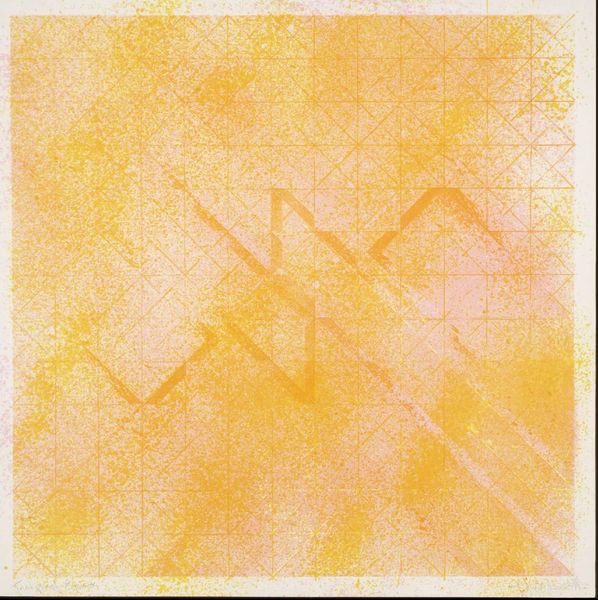
painting, acrylic-paint
#
painting
#
acrylic-paint
#
abstract pattern
#
organic pattern
#
geometric
#
line
Copyright: Andre-Pierre Arnal,Fair Use
Curator: Minimal and quietly elegant. The way those lines intersect... Editor: Yes, there’s a distinct graphic quality. We’re looking at Andre-Pierre Arnal's "Pliage (Folded Painting)" from 1972, an acrylic on canvas piece. Curator: It appears simple at first glance, but the title gives away a key aspect. The visible lines and quadrants seem to indicate that the canvas was physically folded, then painted, and finally unfolded. Editor: Exactly. It highlights a focus on the material process itself. The gesture of folding, the application of acrylic, the evidence of the grid...all speak to the labor and actions involved in the making. It merges painting with, almost, sculpture. Curator: I'm also struck by the subtle palette. The raw canvas plays a vital role. We see its natural, textured surface. The application of that diluted orange feels very intentional, allowing the linen support to have a presence of its own. Editor: I'd add that Arnal worked at a time when institutions and exhibition spaces largely dictated what constituted ‘art.’ His choices—focusing on repetitive gestures, accessible materials like canvas and acrylic, and somewhat blurring the boundaries between painting and other media – question this rigid hierarchy. It engages the wider Pattern and Decoration movement of the period. Curator: Right. "High" and "low" art distinctions get dismantled when you spotlight the method so overtly. There’s something almost democratic in its transparency, laying bare the "how" of the creation. Editor: Agreed. And thinking of the social and artistic environment, pieces like this created alternative spaces for discussion. They pushed viewers to rethink conventional ways of experiencing and understanding painting in that era. Curator: Reflecting on that material act of folding really changes my initial read of it. It transforms a minimalist abstract image into evidence of labor and intention. Editor: Indeed, seeing it as an act of institutional defiance gives the work a more pronounced narrative in art history.
Comments
No comments
Be the first to comment and join the conversation on the ultimate creative platform.
